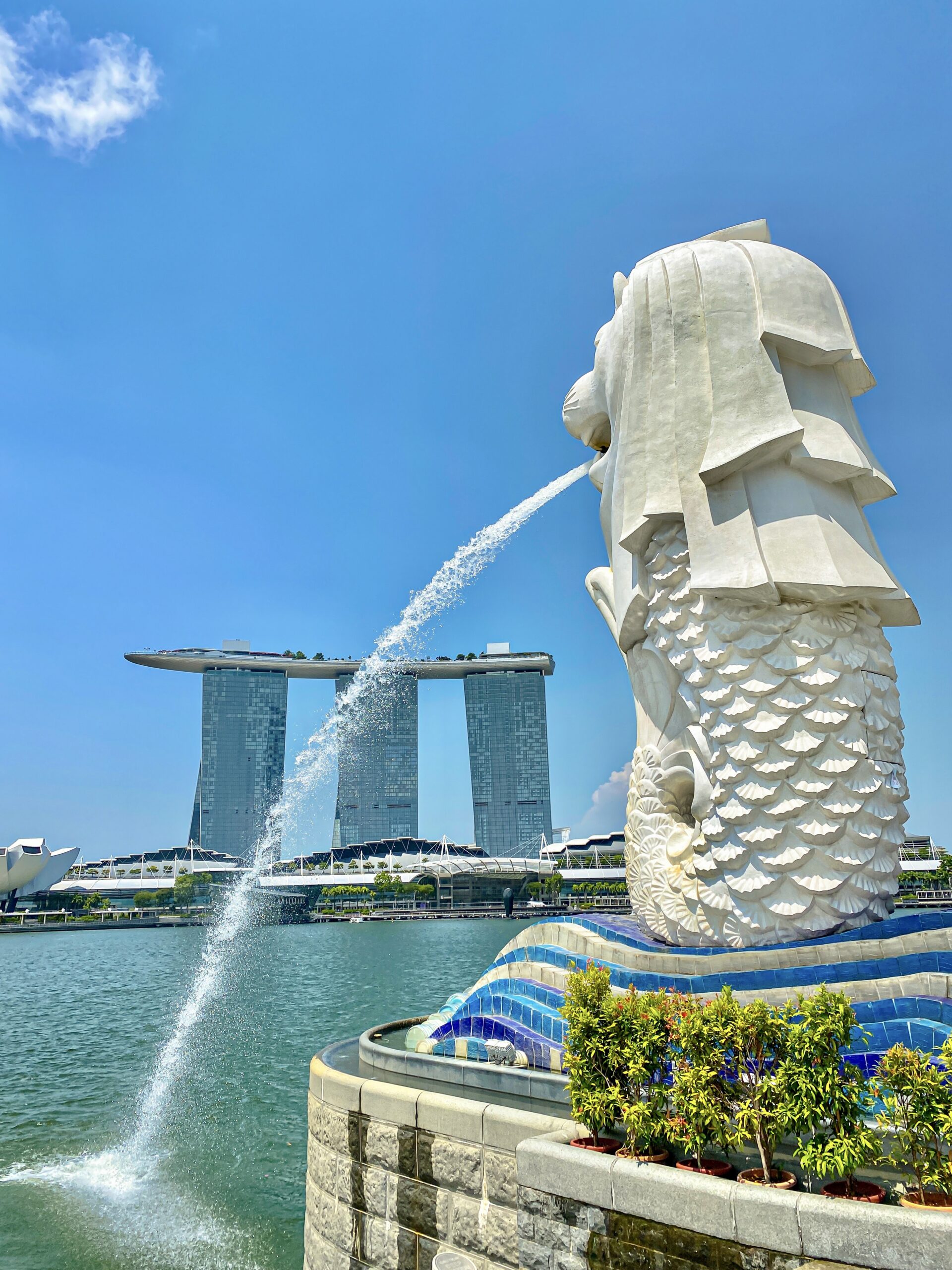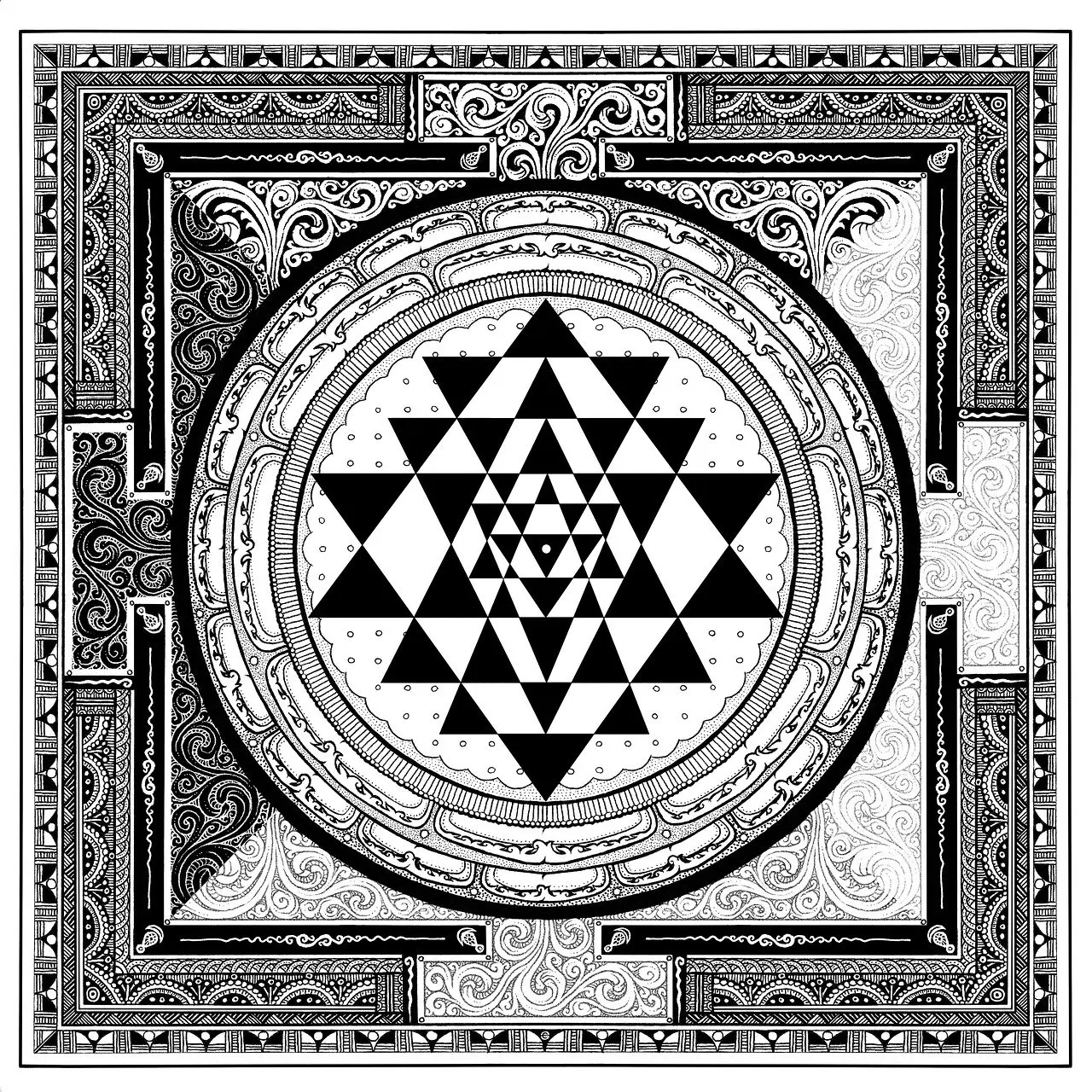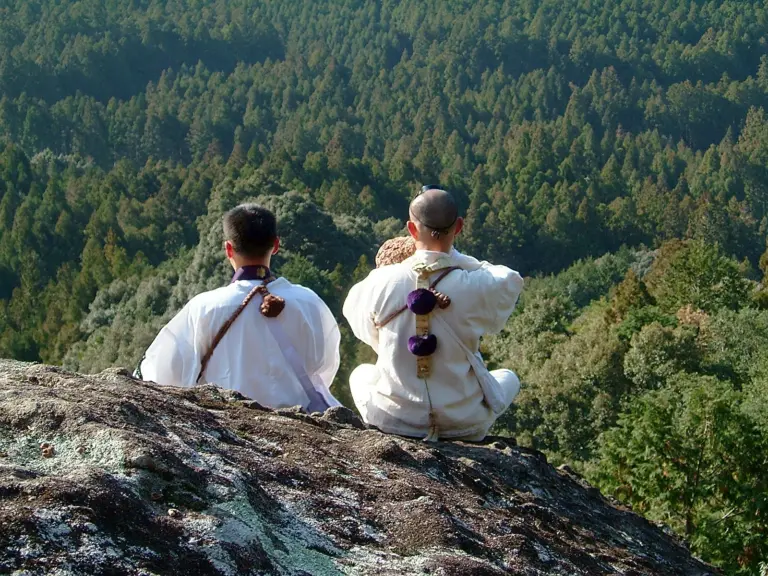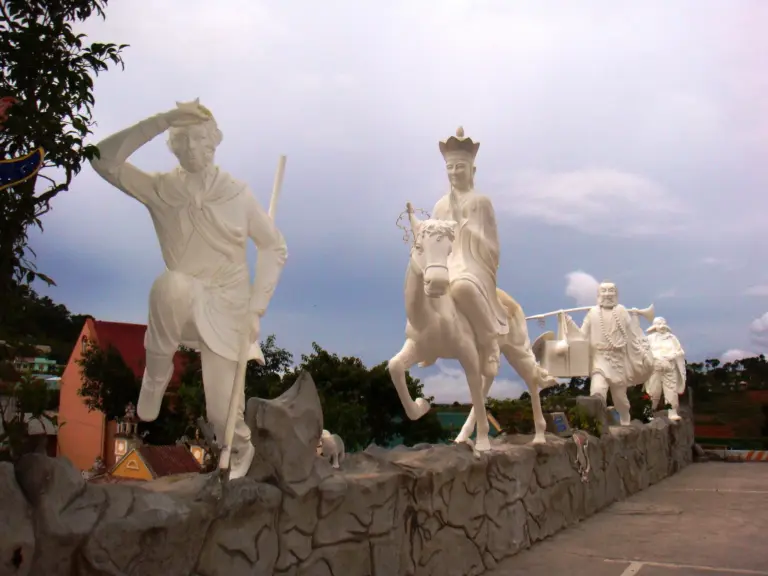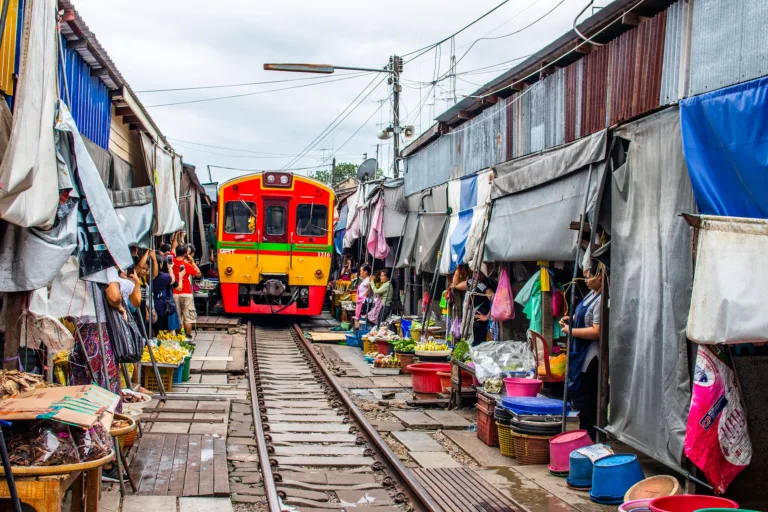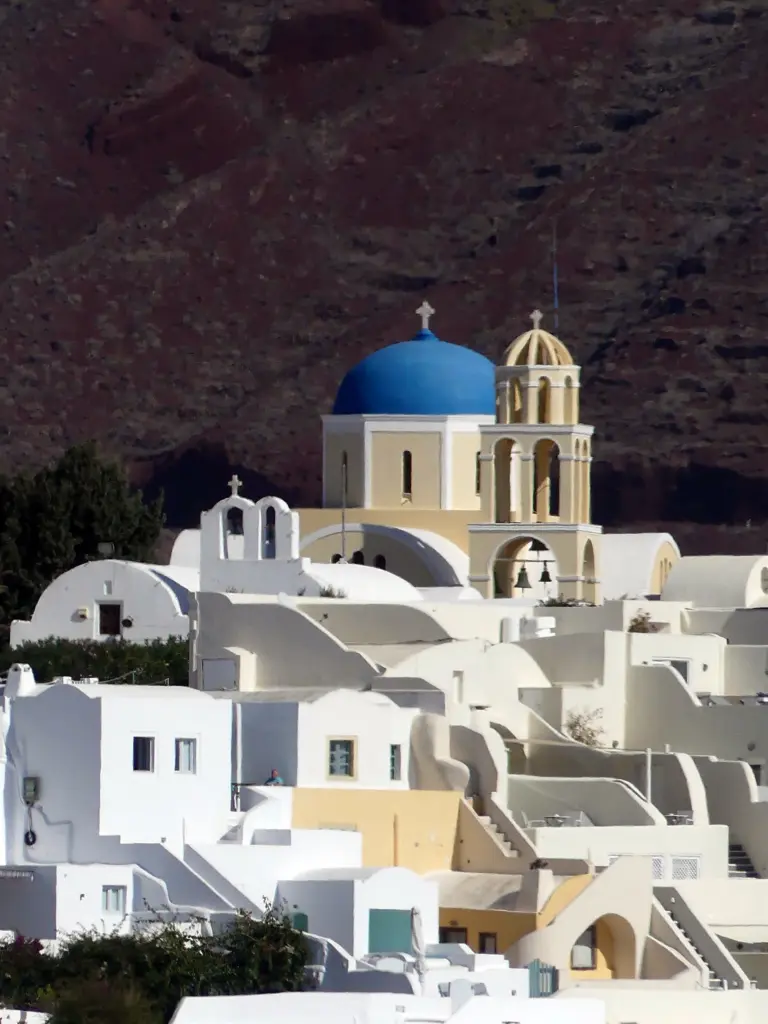Slavic Paganism formed the spiritual backbone of the Slavic people before the advent of Christianity.
Rooted in ancient folklore and natural worship, it encompassed a wide range of practices and beliefs that were integral to the daily lives of the early Slavs. This particular form of paganism was not a singular, organized religion but rather a dynamic collection of local traditions, each with its own pantheon of gods, spirits, rituals, and myths.
Understanding Slavic Paganism is not just a foray into the distant past; it offers invaluable insights into the spiritual heritage of the Slavic people. In studying these ancient beliefs, it helps us comprehend the undercurrents that have shaped the very essence of Slavic cultural identity.
Curious? Read on to learn more!
Table of Contents
Toggle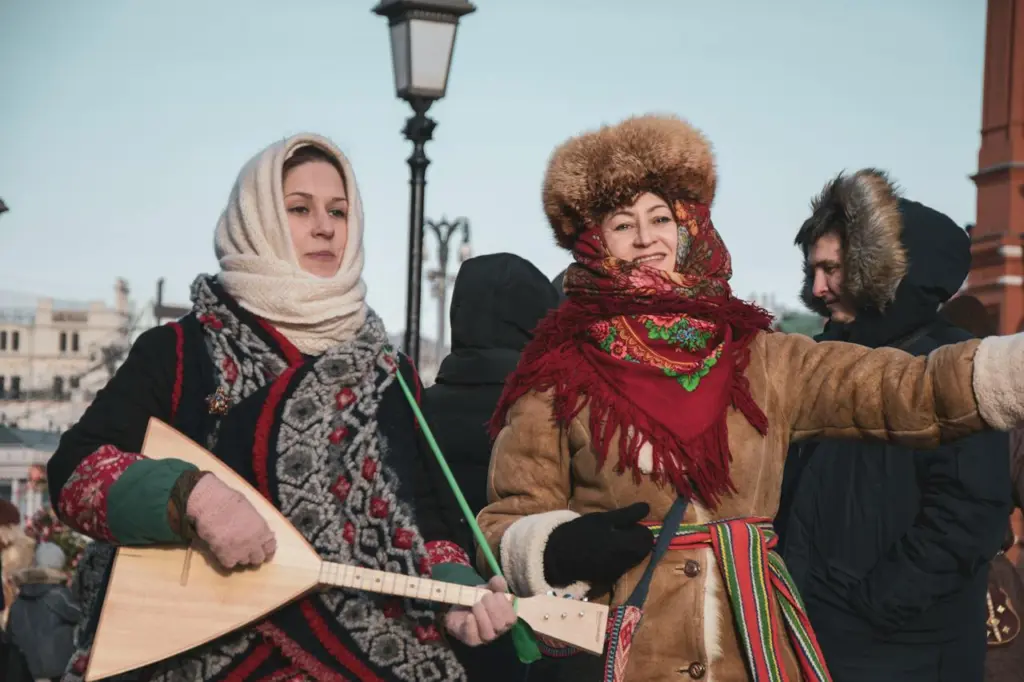
Who are the Slavs?
The Slavs are an ethno-linguistic group of people who share a common ancestry and are one of the largest and most widespread ethnic families in Europe. It’s generally agreed that they emerged as a distinct group between the 5th and 10th centuries AD.
Historically, the Slavs are believed to have originated from an area in Eastern Europe, possibly near the Carpathian Mountains, expanding outward over time. This expansion led to the formation of three main Slavic groups based on geographical and linguistic criteria:
-
East Slavs: This group includes Russians, Ukrainians, and Belarusians. (Russia, Ukraine, and Belarus.)
-
West Slavs: This group consists of Poles, Czechs, Slovaks, and the Sorbs. (Poland, Czech Republic, Slovakia, and parts of eastern Germany.)
-
South Slavs: This group includes Slovenes, Croats, Serbs, Bosniaks, Montenegrins, Macedonians, and Bulgarians. They are primarily situated in the Balkan region. (Slovenia, Croatia, Bosnia and Herzegovina, Serbia, Montenegro, North Macedonia, and Bulgaria.)
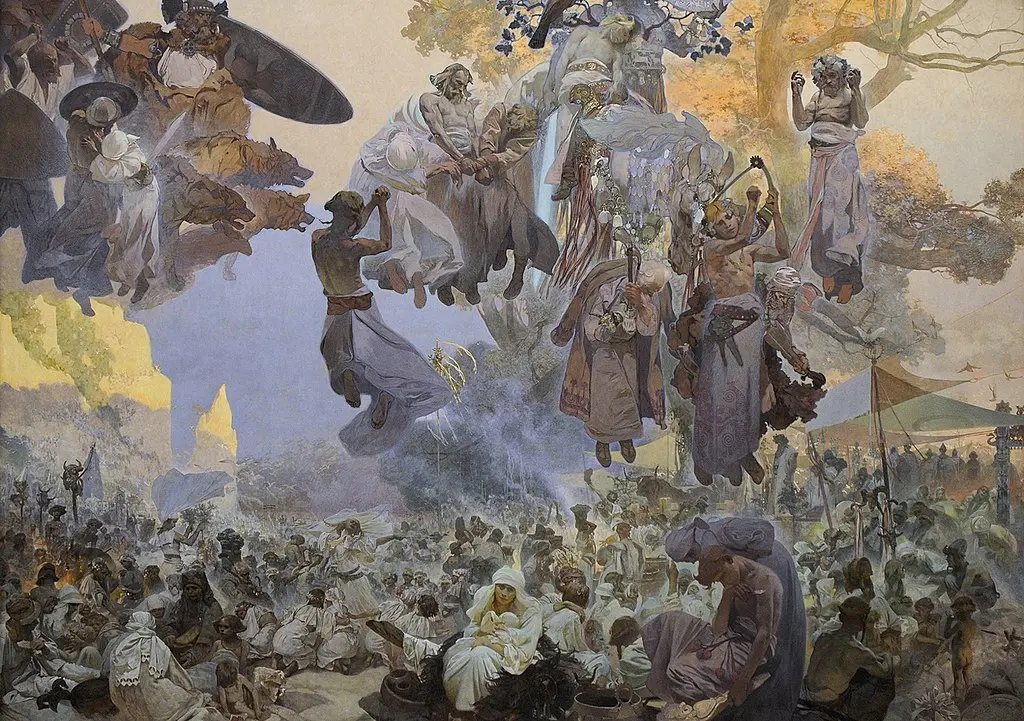
What is Slavic Paganism?
Slavic Paganism is characterized by polytheism (the worship of multiple deities) each associated with natural elements and aspects of daily life.
These deities represented forces of nature, such as the sun, the earth, and water, or human experiences like love, fertility, and war. Slavic Paganism was deeply intertwined with the natural world, reflecting the agrarian lifestyle of the early Slavic communities.
I’d just like to point out that the term Paganism has historically been used to describe religious traditions outside the main Abrahamic faiths (Judaism, Christianity, and Islam). Initially, “pagan”‘ was used by early Christians to refer pejoratively to non-Christians who practiced polytheistic religions.
Over time, the term has evolved and is now used more neutrally to denote various ancient religions worldwide. In the context of Slavic Paganism, it’s important to understand that the term “pagan” is not be construed negatively but rather recognized as a descriptor of a rich religious tradition.
The Kolovrat
The Kolovrat is akin to the sacred swastika and it’s one of the most respected and powerful symbols in Slavic Paganism, representing the sun, life, and the cyclical nature of the universe.
The Kolovrat typically consists of a circular motif with several curved arms or rays extending from the center, usually in a clockwise direction. Each ray of the Kolovrat symbolizes the sun’s movement across the sky, embodying its life-giving energy and the relentless passage of time.
The circular nature and the spinning motion of the Kolovrat represent the cyclical nature of life, the changing seasons, and the idea that life, death, and rebirth are continuous and interconnected processes.
The Kolovrat is also believed to possess protective qualities, offering strength and guidance. It was often used in talisman to ward off evil spirits and bring good luck.
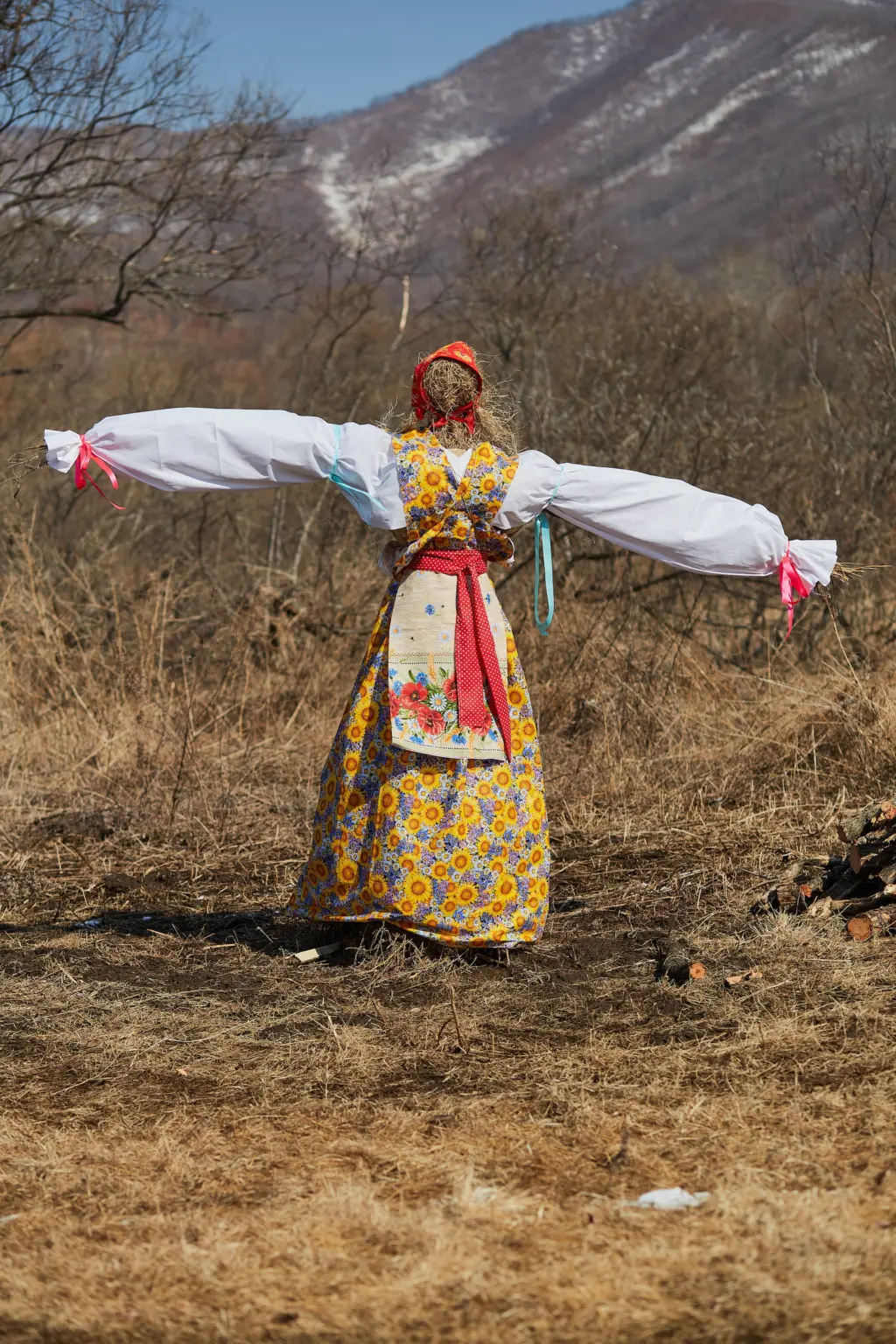
History of Slavic Paganism
Slavic Paganism’s origins are shrouded in antiquity, with its roots likely dating back to the early Slavic tribes before their expansion across Eastern Europe.
As the Slavic tribes expanded and interacted with neighboring civilizations, their religious practices were influenced by various external factors. Encounters with the Norse, Baltic, and Byzantine cultures introduced new deities into the Slavic pantheon. The trade routes and military expansions facilitated these cultural exchanges, leading to a syncretism that enriched Slavic Paganism with even more diverse elements.
The transition from Paganism to Christianity among the Slavic peoples was a gradual and complex process, beginning around the 9th century. Influential figures like Saints Cyril and Methodius and the baptism of Prince Vladimir in 988 played pivotal roles in this transition.
The Christianization process involved both peaceful conversion and coercive measures, leading to the amalgamation of pagan practices with Christian rituals. Which is why we have characters such as Ded Moroz, the Slavic version of Santa Claus.
Over time, Christianity became the dominant religion, but many pagan traditions persisted, often syncretized with Christian practices.
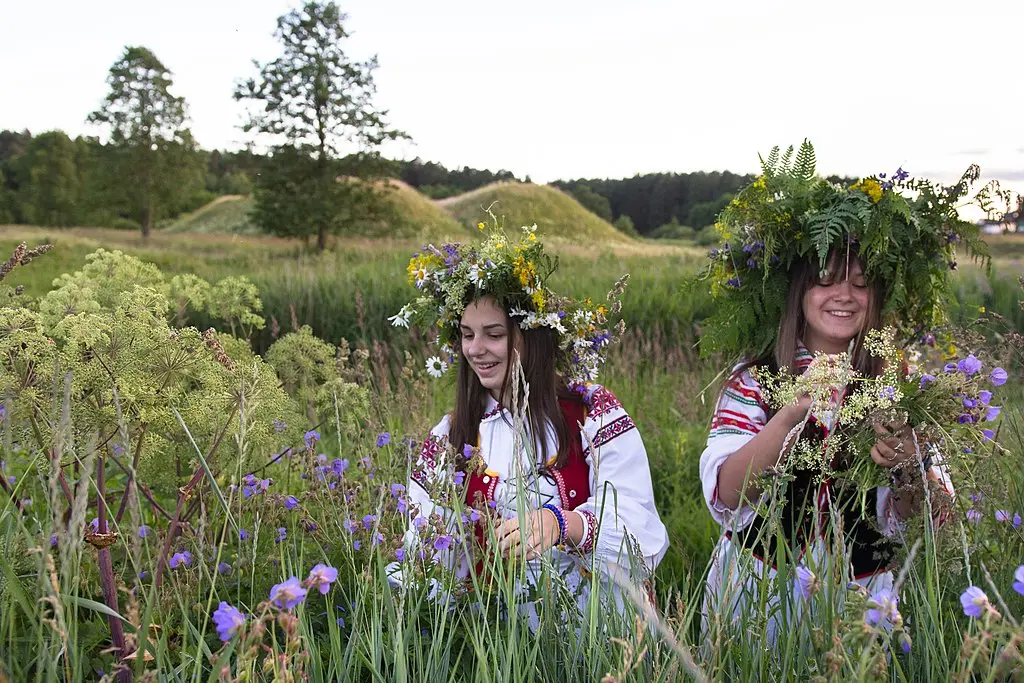
Beliefs of Slavic Paganism
While Slavic Paganism was not a unified religion with a single doctrine, several key concepts were common across various Slavic tribes.
Animism: Aside from being a polytheistic belief system, Slavic Paganism is also animistic, meaning that the Slavs believed spirits inhabited natural objects and places like rivers, trees, and mountains.
Veneration of Ancestors: The Slavs believed their ancestors’ spirits had a continuing presence and influence in the world of the living, and they performed rituals to honor and appease these spirits.
The Cycle of Nature: The Slavic religious calendar was closely tied to the agricultural cycle and the changing of the seasons. Festivals marked key seasonal transitions, such as the planting and harvesting of crops, and were aimed at ensuring the fertility of the land and the prosperity of the community.
Concept of Fate: Similar to many ancient belief systems, the Slavs had a strong belief in fate. They believed that certain aspects of life were preordained and respected the mysterious powers that governed human destiny.
Sun and Fire: The sun held a special place, often personified as a deity. Fire was also sacred, seen as a protective and purifying force. Rituals involving fire, such as bonfires during festivals, were very common.
The Slavic Pantheon
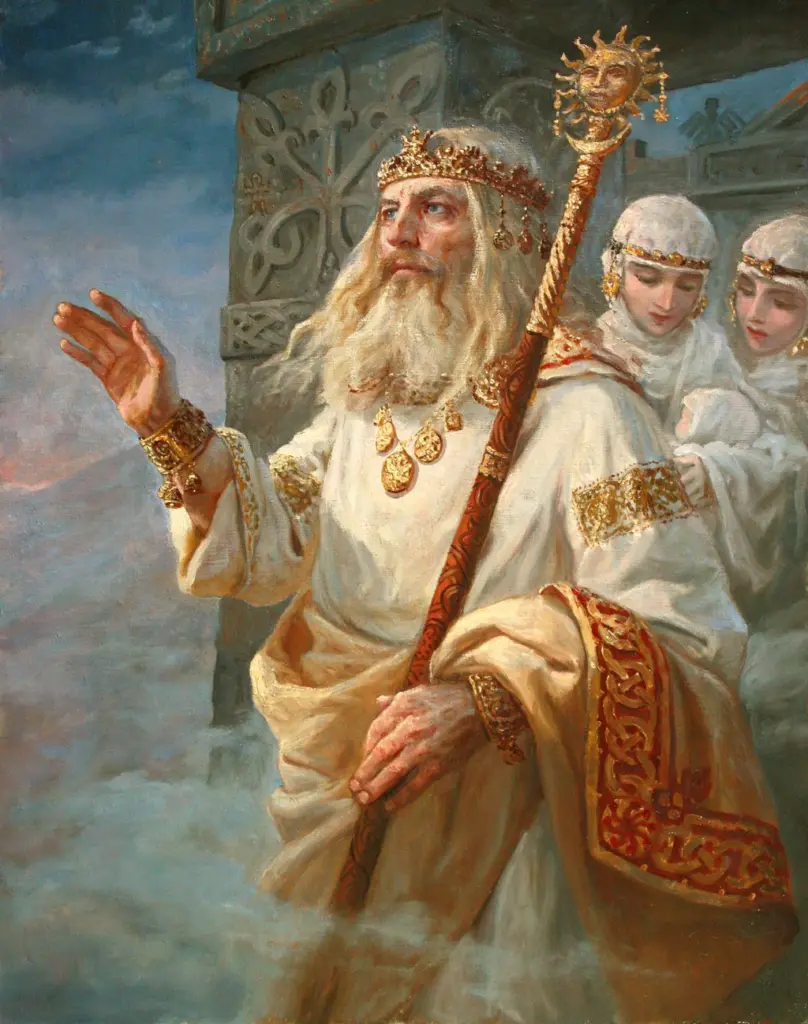
1. Rod
In Slavic mythology, Rod stands as the primordial creator, the cosmic artisan who sculpted the universe and breathed life into its many forms. He is the originator of all existence, from the loftiest of deities to the humblest of mortals, making him not just a god among gods but the fountainhead of all divinity and life.
As the original ancestor from whom all life springs, he is the patriarch of an unbroken lineage that connects the living with their forebears. His very essence is intertwined with the fundamental processes of birth and creation.
Beyond his role as the creator, Rod is also the master of fate, holding the loom upon which the destinies of gods and humans alike are woven (Just like the Norns and Moirai). In this role, he is akin to a celestial ruler, maintaining the balance and order of the universe.
His decisions and judgments are seen as final, shaping the courses of lives and events in a manner beyond mortal comprehension. This aspect of Rod as the deity of fate places him at the heart of the Slavic understanding of the cosmos, where every star, every life, and every event is part of a grand plan.
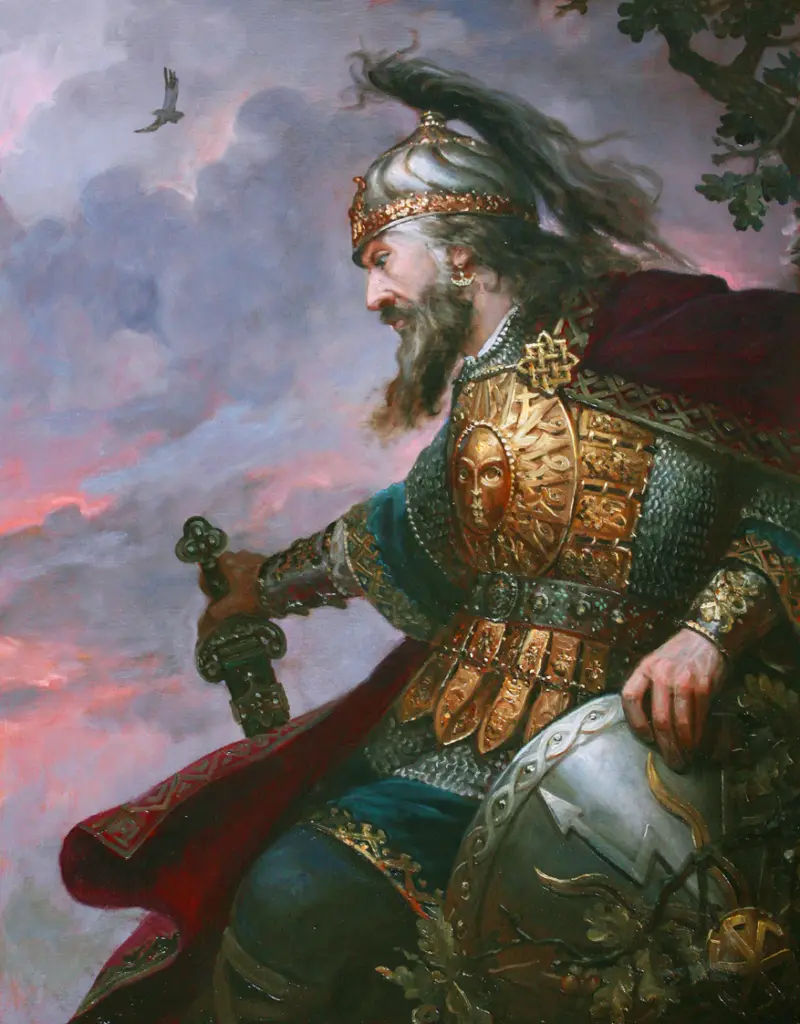
2. Perun
As the god of thunder, lightning, and war, Perun stands as the mighty warrior, wielding his thunderbolt with awe-inspiring power.
Akin to the likes of Hindu god Indra, Zeus, and Thor, he is often envisioned as a robust, formidable figure, his presence heralding the rumble of thunder and the flash of lightning across the sky. His dominion over these elements not only makes him a fearsome deity but also symbolizes his role as a protector and upholder of law and order. In times of war, Perun is the deity to whom the warriors turn to.
Perun’s association with the oak tree, considered sacred, further cements his image as a symbol of strength. The oak, struck more often by lightning than any other tree, is seen as Perun’s earthly abode, a tangible representation of his power in the natural world. Rituals in his honor were often conducted in oak groves, which for the Slavs were considered as sacred spaces where the divine and earthly realms converge.
Beyond the might and fury, he is also a guardian of justice and order. In this aspect, he oversees the moral laws governing human society, punishing those who stray from the path of righteousness.
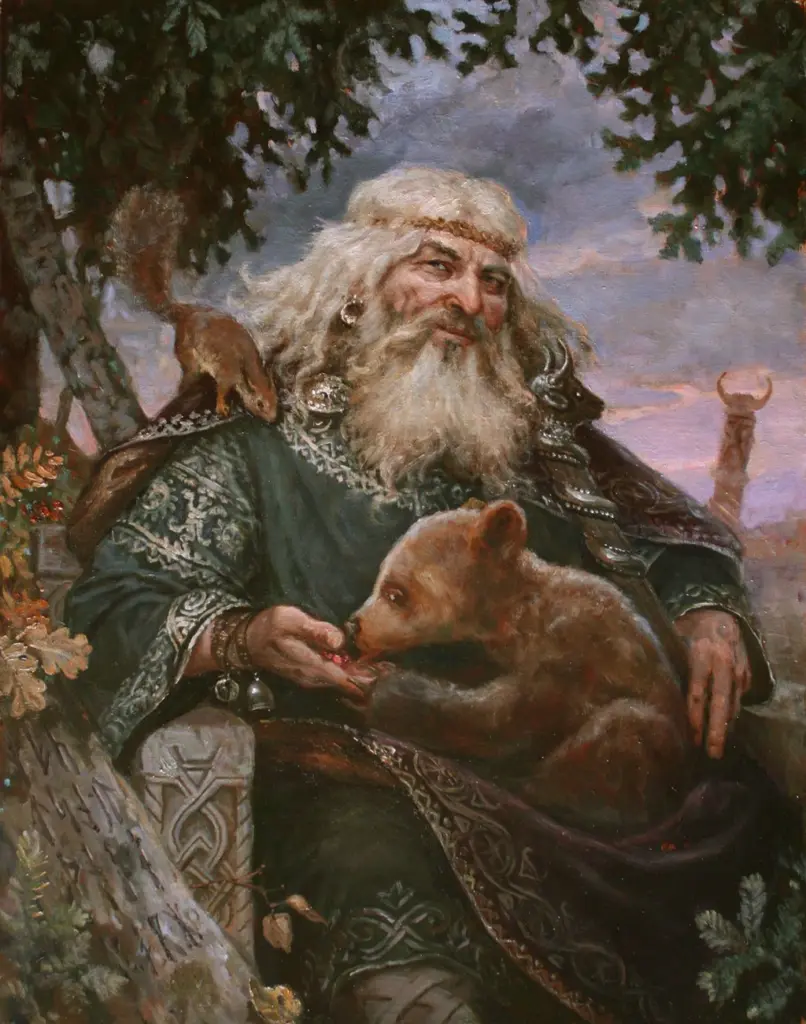
3. Veles
Veles’ portrayal often contrasts with that of Perun, forming a fundamental duality within Slavic mythology. While Perun reigns in the celestial realm, Veles dwells in the underworld, a realm associated with water and earth. This realm is not just a place of darkness; it is also a source of fertility, wealth, and abundance.
As such, Veles is not only the lord of the dead but also the protector of livestock, a patron of wealth, and a guardian of the harvest.
Veles’ sphere of influence extends to the realm of mystical arts. Known for his cunning and shapeshifting abilities, he embodies the mysterious nature of magic. As a trickster figure, he challenges the order represented by Perun, similar to Loki in Norse Mythology.
The rivalry between Veles and Perun is one of the central themes in Slavic narratives, symbolizing the ongoing struggle between order and chaos, high and low, sky and earth. Their battles, often resulting in the changing of seasons, reflect the Slavic understanding of the natural world’s cyclical nature and the perpetual tension between opposing forces.
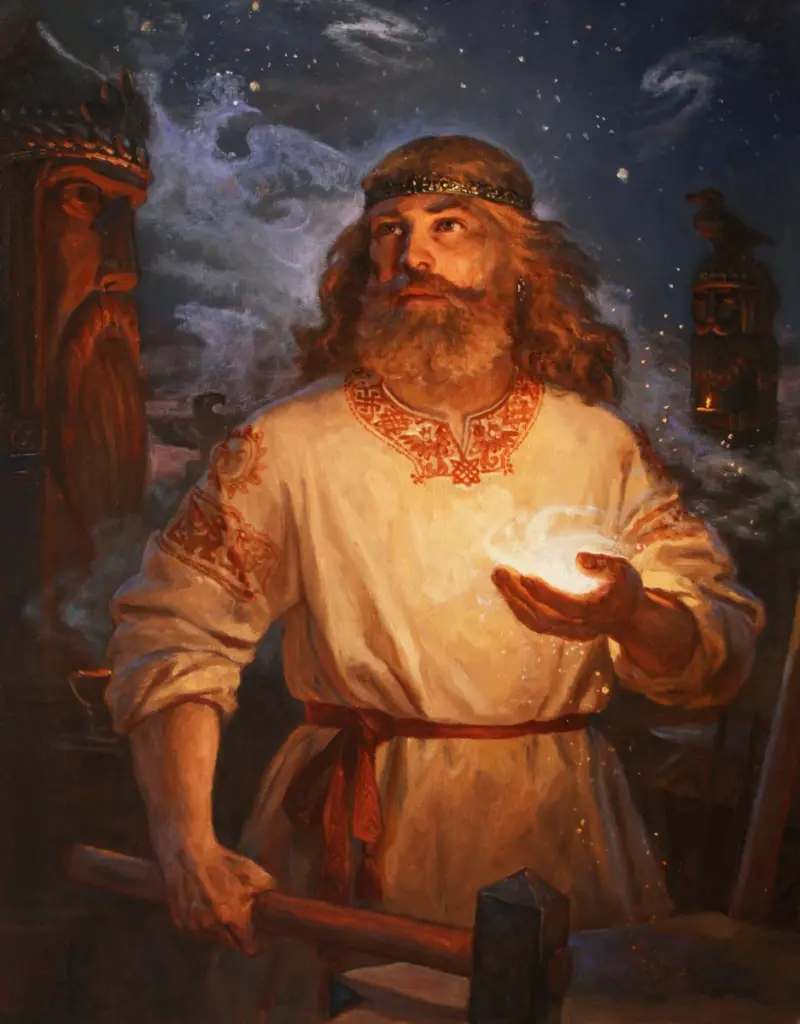
4. Svarog
As the god of celestial fire and the sun, Svarog is perceived as the divine blacksmith, forging the sun and giving it to his son, Dazhbog, to carry across the sky. The daily journey of the sun is a constant reminder of Svarog’s benevolence.
In this aspect, he shares similarities with Hephaestus or Vulcan from Greco-Roman mythology, both gods of fire and metalworking.
In Slavic lore, Svarog is often depicted as a powerful and wise figure, wielding his skills not just in the physical act of creation but also in the imparting of knowledge to humanity, which also bears resemblances to Prometheus, another prominent figure in Greek mythology.
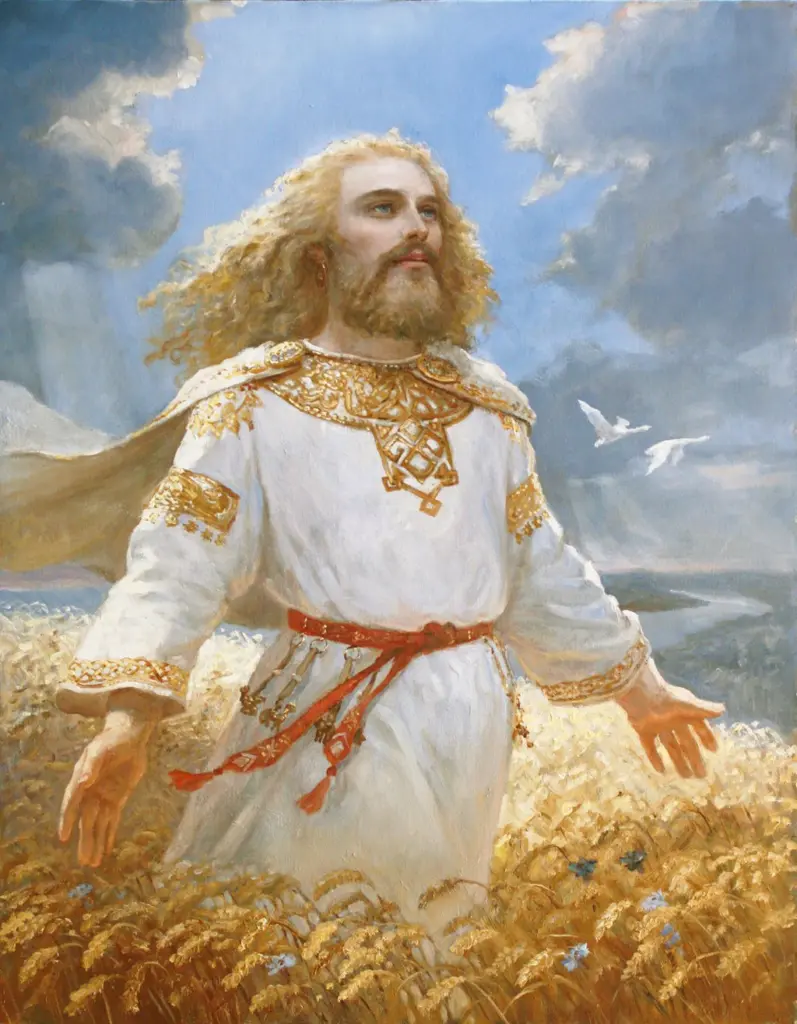
5. Dazhbog
Dazhbog, the sun god, is celebrated as a symbol of life, energy, and prosperity.
In the narrative of Slavic mythology, Dazhbog is often portrayed as a generous deity, bringing light, warmth, and well-being to the earth. His connection with the sun makes him one of the key gods responsible for the fertility of the land and the prosperity of the people. The sun’s daily journey across the sky is attributed to Dazhbog’s divine influence.
He was also seen as a symbol of wealth. The abundance brought by the sun’s warmth was seen as a manifestation of Dazhbog’s generosity. He was thus invoked not only for his life-giving powers but also for success.
Dazhbog sometimes takes on a more anthropomorphic form, depicted as a golden-haired youth or a mighty charioteer driving the sun across the sky. This imagery echoes the journey of Ra on his carriage as the Sun God in Egyptian mythology.
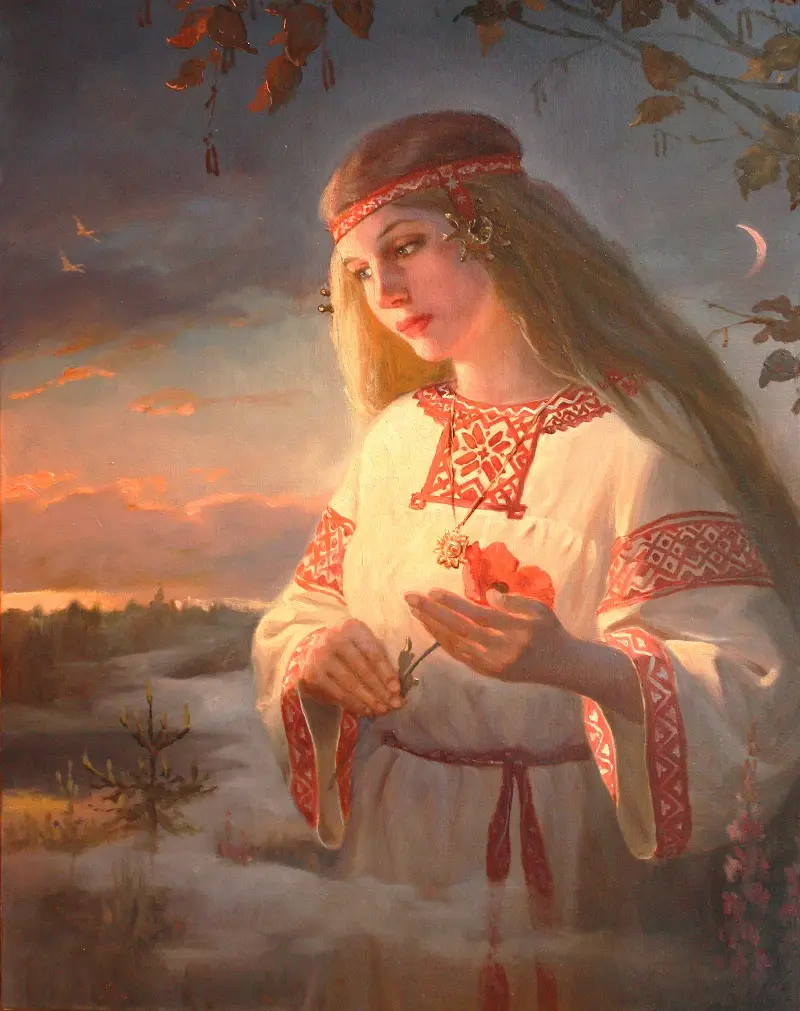
6. Zorya
The Zorya, often described as twin sisters, serve as guardians of the universe.
Their primary duty is to watch over the doomsday hound, Simargl, who is chained to the star Polaris in the northern sky. They ensure that this fearsome creature does not break free, as its freedom would result in the destruction of the world.
Zorya Utrennyaya, the Morning Star, heralds the dawn, opening the gates of the palace of the sun god Dazhbog each morning, allowing him to begin his daily journey across the sky. She symbolizes the beginning of a new day, bringing light, hope, and renewal. Her appearance in the morning sky is a reminder of the constant cycle of night turning into day, darkness giving way to light.
Zorya Vechernyaya, the Evening Star, marks the closing of the day. She is the one who closes the gates once Dazhbog completes his journey, signifying the onset of dusk and the return of darkness. Her role is not just to signal the end of the day but also to offer protection during the night, ensuring the safety of the universe as it rests under the cloak of darkness.
In some interpretations, there is a third Zorya, Zorya Polunochnaya, representing the Midnight Star. She is often associated with the deep mysteries of the night, the moon, and the unseen aspects of the universe.

7. Yarilo
Yarilo represents the return of warmth and the resurgence of life after the long, harsh winter. As a god of fertility and vegetation, he is closely associated with the rejuvenation of the earth, the blossoming of flowers, and the ripening of crops. Basically, the coming of spring.
He is the harbinger of new life, both in the natural world and within the communities that depended on the earth’s bounty for their sustenance.
Yarilo’s story is also one of a cyclic journey, reflecting the natural progression of seasons. He is often described as returning in the spring, and then departing at the end of the summer. This cycle of departure and return imbues Yarilo’s character with a sense of impermanence, mirroring the ebb and flow of life itself.
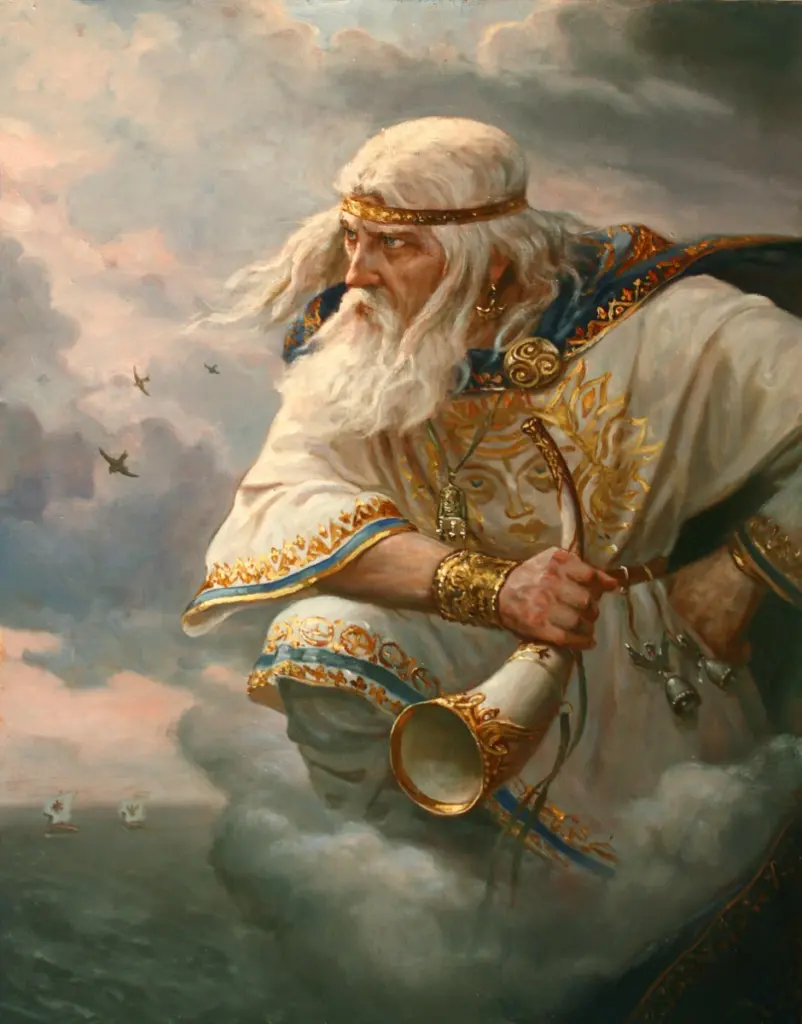
8. Stribog
As the deity governing the winds and sky, Stribog was seen as a powerful and somewhat enigmatic figure. He held sway over the breezes that brought life-giving rain to crops, as well as the fierce gales that could destroy them.
In this role, Stribog embodied the dual nature of the elements – both beneficial and destructive. His control over the winds also linked him to travel, communication, and the spread of ideas, as the wind carried both seeds and stories across vast distances.
Stribog is often depicted as an ancient, wise figure, commanding respect. He was believed to be the ancestor of the eight winds, each emanating from a different cardinal direction. These winds, personified as his grandchildren, were seen as extensions of his will, helping to execute his command over the natural world.
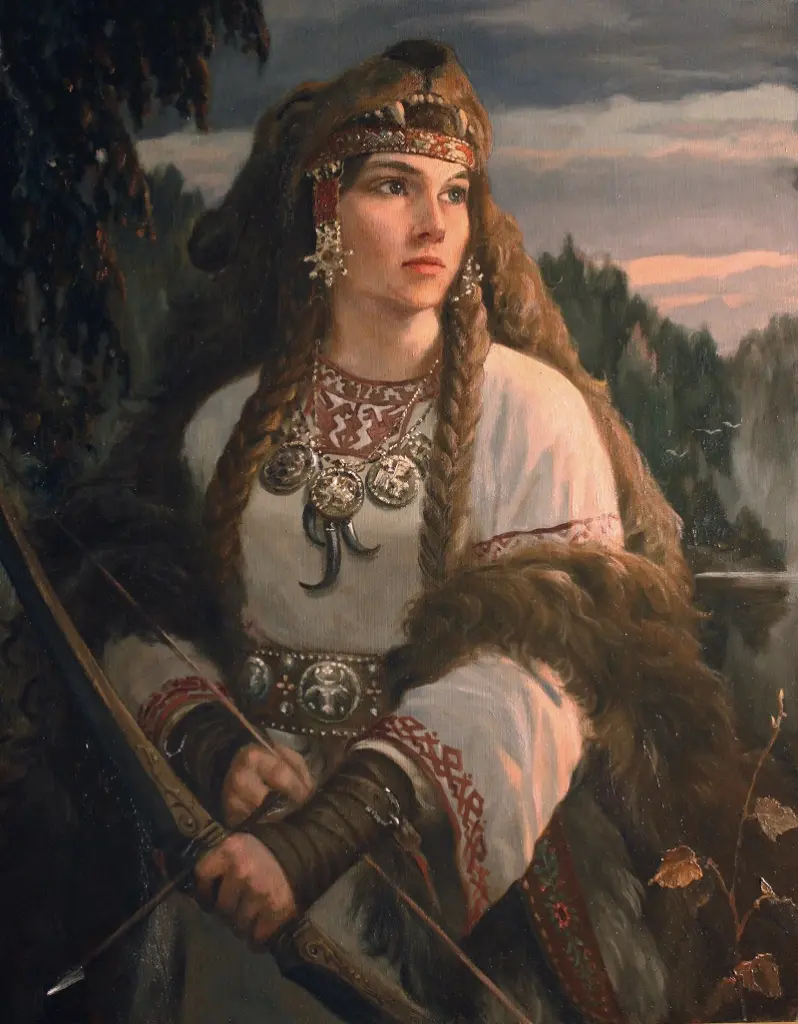
9. Devana
Devana is known as the goddess of the hunt, forests, and wild animals, her character embodies the untamed aspects of nature and the spirit of freedom and independence that permeated the ancient Slavic worldview.
Devana, often portrayed as a fierce and beautiful huntress, roamed the dense forests of the Slavic lands with the agility and grace of the deer she is associated with. She was revered not just as a deity of the hunt but also as a guardian of the woods and the creatures that dwell within.
She symbolized the intricate balance of life and death in the natural world, a cycle of sustenance and survival that was deeply respected by the Slavic people.
As a counterpart to the Roman goddess Diana or the Greek Artemis, Devana was also seen as a protector of women, particularly those who dared to defy traditional roles and embrace the freedom and wildness she herself epitomized. Her followers, much like the Amazons of Greek mythology, were envisioned as strong, independent women, skilled in archery and woodcraft.
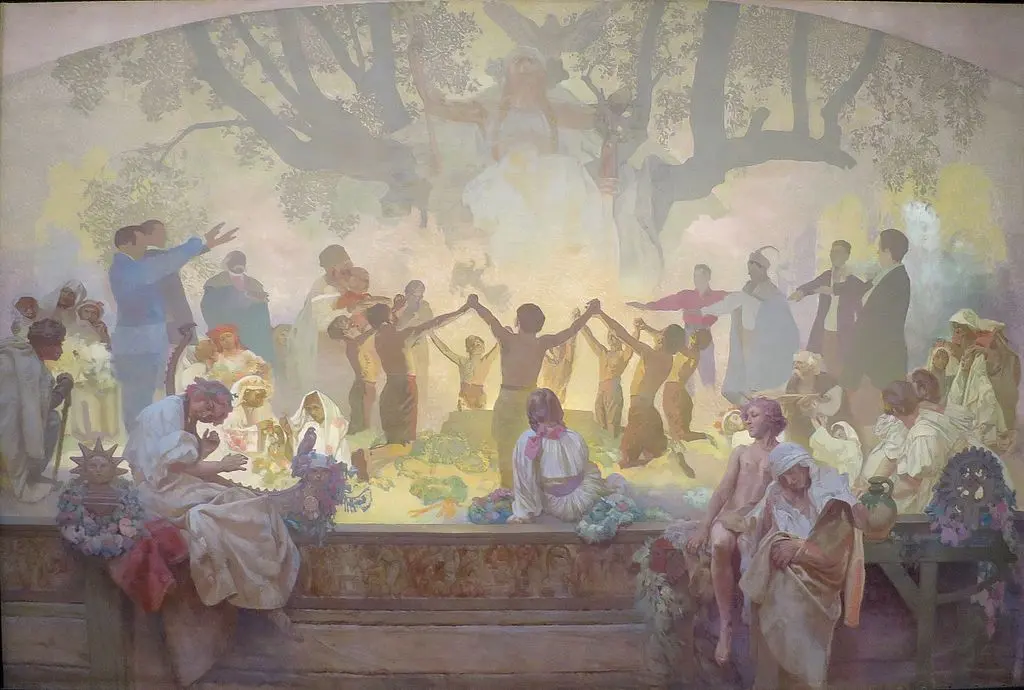
Slavic Cosmology
For the ancient Slavs, the universe was a vast and interconnected entity. They saw the cosmos as a living, breathing organism, with each part having its own purpose. The cycles of nature, the movements of celestial bodies, and the changing seasons were all seen as manifestations of the cosmic dance, governed by divine forces.
The Slavic cosmological model can be visualized as a three-tiered structure, with the heavens above, the earth in the middle, and the underworld below.
The World Tree, often an oak, symbolized the cosmos’s structure, connecting the heavens, earth, and underworld. Its roots delved into the underworld, its trunk stood on the earth, and its branches reached into the heavens, representing the interconnectedness of all realms.
Slavic Mythology
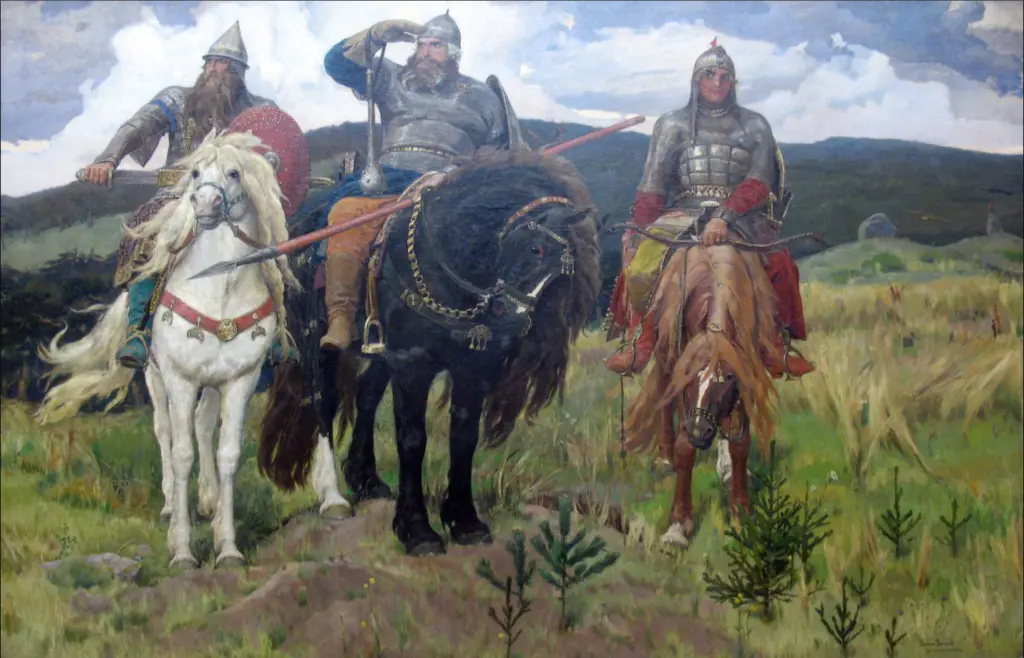
Folktales
Bogatyrs: The Bogatyrs are legendary Slavic heroes, akin to knights, known for their strength, bravery, and prowess. Their tales, often set in a mythical version of the Kievan Rus’, involve epic battles against formidable foes, dragons, and evil spirits. These stories, such as those of Ilya Muromets and Dobrynya Nikitich, celebrate virtues like courage, loyalty, and the triumph of good over evil.
Firebird: Tales about the Firebird typically revolve around a quest to capture this elusive creature, often leading to a series of challenging adventures. The Firebird symbolizes both a coveted treasure and a source of trouble.
Baba Yaga: Baba Yaga is a famous character in Slavic folklore, depicted as a witch living in a hut on chicken legs. While sometimes portrayed as malevolent, she is also seen as a wise figure with deep knowledge of the mysteries of nature. Tales involving Baba Yaga often include themes of heroism, the challenges of growing up, and the importance of wit and wisdom.
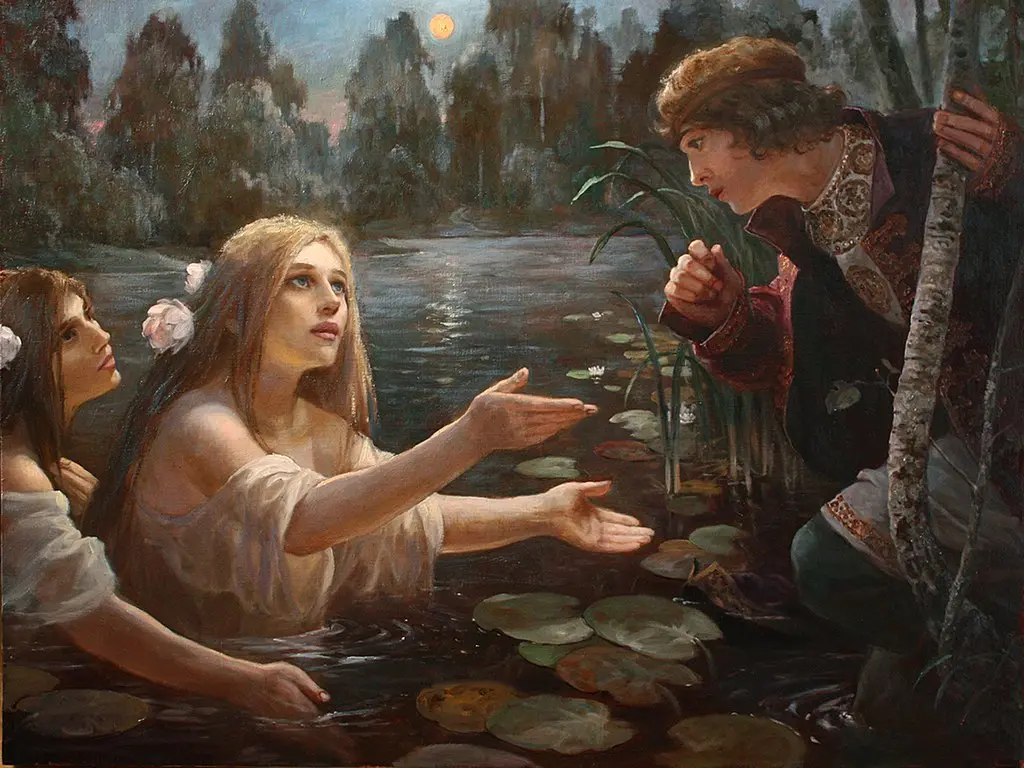
Mythical Creatures
Vodyanoy: The Vodyanoy is a water spirit, often depicted as an old man with a frog-like face, greenish beard, and long hair, with a body covered in algae and muck. Dwelling in rivers, lakes, and ponds, the Vodyanoy is said to cause drownings and is appeased by fishermen to ensure a bountiful catch.
Leshy: The Leshy is a forest spirit, guardian of the woods and animals. Described as a tall being capable of changing size, the Leshy has a close connection with wolves and bears. While generally benign, it can lead travelers astray. If you ever played the Witcher, you’d know just how formidable a foe a Leshy can be!
Rusalka: Rusalki are water nymphs, often depicted as beautiful young women, they are believed to be the spirits of drowned maidens who died untimely deaths. Rusalki can be benevolent, but they are also known to lure men to their watery depths.
Zmey Gorynych: This dragon-like creature, often depicted with three heads, is a common antagonist in Slavic heroic tales. The Zmey Gorynych breathes fire and is typically defeated by a brave hero.
Domovoi: A household spirit believed to protect the home and its inhabitants. The Domovoi is usually helpful but can become mischievous if not respected.
Kikimora: A female house spirit, often associated with spinning and weaving. The Kikimora can be helpful with household chores but is known to cause nightmares and is sometimes seen as a bad omen.
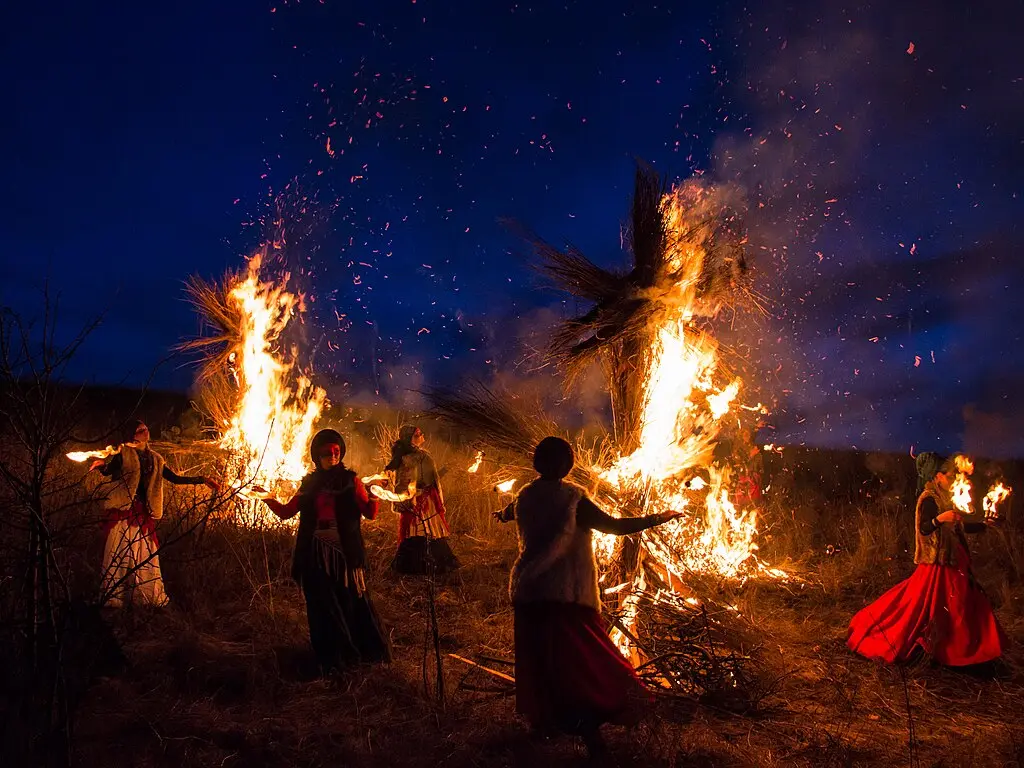
Rituals of Slavic Paganism
In Slavic Paganism, rituals were a celebration of life, nature, and the divine forces. These practices, imbued with deep symbolism, were integral to the Slavic way of life, reflecting their beliefs and values in a harmonious blend of spirituality and daily existence.
Central to many of these rituals were bonfires, their flames leaping towards the heavens as a powerful symbol of purification, protection, and renewal. The act of jumping over these fires was a passage through the purifying flames, believed to cleanse the soul and bring good fortune.
The changing of the seasons was often marked by the creation and burning of effigies. These figures, representing deities of the waning season, were crafted with care and then consigned to the flames. This ritual acted as an acknowledgment of the end of a cycle and the beginning of another. The burning of the effigy, particularly as winter gave way to spring, symbolized the triumph of life and light over the darkness of winter.
In some tribes, shamans were the mediators between the human and spiritual realms. Their rituals, often mystical, involved entering trance states, animal sacrifices, and sacred dances. These shamans were not just spiritual leaders but also healers and guides, helping with various aspects of life, the interpretation of dreams, and navigating the intricate web of the seen and unseen worlds.
Slavic Pagan Festivals
Slavic Pagan festivals continue to be celebrated in various forms to this day. These festivals, often syncretized with Christian traditions, remain a vibrant part of the cultural heritage in many Slavic countries, particularly in Russia.
Ivan Kupala Day: Ivan Kupala Day, celebrated on the night of July 6th to 7th (June 23rd to 24th on the Julian calendar), is one of the most enduring and popular Slavic festivals. Originally a pagan fertility rite, it has been linked to the birth of John the Baptist (Ivan) in the Christian tradition. The festival is marked by various rituals and customs, such as jumping over bonfires, girls floating wreaths of flowers on rivers, and searching for the mythical fern flower. It is celebrated with much fervor in Russia, Belarus, Ukraine, and Poland.
Maslenitsa: Also known as Pancake Week, Maslenitsa is celebrated during the last week before the start of Great Lent. It marks the end of winter and the coming of spring. The festival involves the widespread consumption of bliny (pancakes), which symbolize the sun due to their round, warm, and golden nature. Maslenitsa festivities include snowball fights, sledding, riding on swings, and effigy burning.
Koliada: Koliada is the winter solstice festival, historically celebrated to signify the rebirth of the sun. It involves caroling and merrymaking, and in some regions, a person dressed as Koliada (representing a young, robust god) leads the procession.
Rusalnaya: Linked to the aforementioned rusalki, Rusalnaya or Mermaid week was traditionally celebrated in late spring or early summer. It involved rituals to appease the rusalki, who were believed to leave the water to swing on branches of trees during this week.

